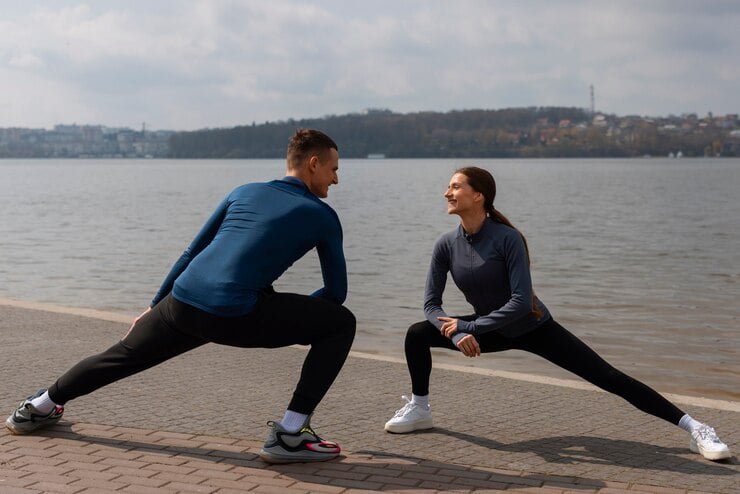
Teens who need to be coached and supported through life skills are the ones who would benefit from these activities not just for company retreats. in a world where digital communication is at the forefront, these physical activities help teenagers in building social ties. These activities are some of the ways how young people learn teamwork, communication, trust and problem solving skills which will help them deal with others well enough in the future. This blog will take a look at many different fun team building exercises that are tailored especially for teenagers as well as address some common questions about how to implement them.
Why Team Building for Teens?
Before delving into specific acts, it is important to understand the importance of team building for teenagers. Here are some reasons why:
Better Communication:
By encouraging teens to voice their thoughts effectively and listen to others’ opinions, these activities foster better communication skills.
Improve Collaboration:
Adolescents learn how to work together, split responsibilities and value different perspectives when they interact with their peers.
Boosted Confidence:
By being able to complete tasks as a group members of staff can improve their own self-esteem and confidence levels at times,
Problem-Solving Skills:
Creative thinking and problem solving are required in most of these games and one can use them throughout life.
Closer Friendships:
Stronger bonds between friends and acquaintances can be created by engaging in team building exercises together.
Team Building Exercises
Human Spiderweb
Objective
Improve teamwork and communication;
Instructions:
Make participants stand in a circle facing outwards so that each person is touching the shoulders of the two individuals adjacent to him or her;
Let each person extend his or her right hand into the center of the circle so as to hold hands with someone across from them;
Have every individual extend his or her left hand into the center so as to hold hands with another person (but not a neighbor);
Without releasing their hands, they have to free themselves from a tangled ‘spiderweb’ and form one continuous circle.
Skills Developed:
communicating
thinking through problems
waiting

Trust Fall
Objective
Create trust among team members;
Instructions:
Pair off the participants such that one stands with his or her back towards the other;
The standing individual will fall backwards while trusting the person behind him/her to catch them;
After every successful catch they must switch positions.
Skills Developed:
reliance on others,
bravery,
taking responsibility for oneself independently,
Scavenger Hunt
Objective
Encourage strategic thinking and cooperation;
Instructions:
Break up teenagers into small groups of about three or four each;
Provide them with a list of things to find or tasks to do within a specific time frame;
The group that collects the most items or completes the most tasks wins.
Skills Developed:
working together in groups
time management skills
planning ahead tactically
Egg Drop Challenge
Objective
Encourage creativity and collaboration;
Instructions:
Separate kids into teams and give them some supplies like straws, masking tape, old newspapers etc.
Each team is supposed to make a protective cover for an egg.
Dropping it from a height will test which design keeps the object safe.
Skills Developed:
innovation,
working together as teams,
knowledge of engineering terms used today,
Minefield Team Building Activity
Objective
Enhance communication and trust building amongst team members;
Instructions:
Arrange chairs, cones etcetera for an obstacle course in one part of your training area.
One member wears blindfold while another instructs him/her verbally on how to go through such a course.
The objective is to go through without hitting anything along it before reaching its endpoint.
Skills Developed: directed listening; following directions
Balloon Tower
Objective
Enhance teamwork and creativity;
Instructions:
Give groups of balloons and adhesive tape to each group.
Teams are given a specific time frame within which they should create the highest free standing balloon tower.
Encourage out-of-the-box use of items and teamwork.
Skills Acquired:
Imagination
Collaboration
Critical Thinking

Frequently asked questions
Q1. What is the most ideal team building activity for a huge number of teenagers?
For large groups, an excellent option could be to carry out games such as scavenger hunts or human knot that have many participants and allow interactions between quite many teens simultaneously.
Q2. How often should we do team-building activities?
This relies on your objectives. Monthly exercises are good for continuous improvement. Conversely, if you are doing it with respect to a program like camp or retreat, then intermittent bursts of actions will suffice.
Q3. Can these activities be used across all the ages under the broad category of ‘teenagers’?
Absolutely, they include every teenager in mind and can be modified to fit younger (13-15) or older (16-19) teenagers.
Conclusions
Team building exercises offer great opportunities for teenagers to acquire essential life skills through enjoyable learning experiences that encourage communication, collaboration, trust which form solid bonds between people in their private and work lives in future years. When incorporated into school curriculums, community groupings or camps; these activities serve as platforms for teenage development outside conventional academic settings.
Ready? If you’re a teacher, camp leader or parent who desires wholesome growth among teenagers, then organizing team building activities will greatly help to achieve this. Just start planning your next session and see the magic